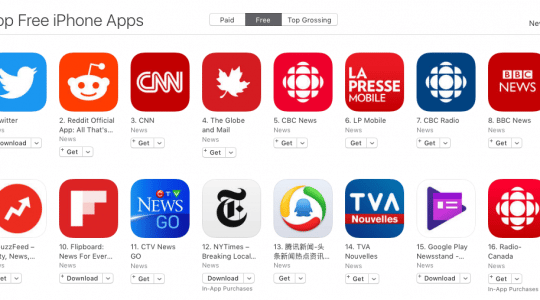
Location is one of the key components of modern marketing. But it’s also one of the most problematic, because it has huge potential for privacy violations.
Just this past week, it’s come to light that some telcos may be providing personal data including location to advertisers. A couple of months ago one of the larger weather apps, AccuWeather, was found to be transmitting location information to a data vendor, even when against people’s direct wishes.
So location-based mobile marketing can be tricky. It can be creepy. And, it can be illegal.

But it can also be incredibly useful. Try using Uber or Lyft without location sharing. Or Pokémon Go and other location-dependent games which rely on knowing where you are.
From a brand perspective, if there are 30 billion mobile moments in the U.S. alone in which you can win, serve, or retain a customer, billions of them involve where a customer is, what she or he is doing, and how you can help. Stores, museums, venues, and other parties are already using these features.
TUNE provides location data to app publishers via a partnership with Smartwhere. We call it In-Store Events, and it’s designed to help marketers understand:
- How often your mobile customers visit a physical location
- How long they spend there
- Which mobile customers have never visited a company’s physical location
- How your physical locations are driving mobile app installs by your customers
- Which ad partners are connecting mobile customers to local stores
- And much more …
But the question remains: How do you do this ethically, legally, and in a way that your customers actually want? After all, if you’re not making your customers happy with great proximity features, you’re shooting yourself in a very specific location: your foot.
I asked CJ Chaney, a co-founder at Smartwhere, how brands should incorporate proximity and location based marketing into their apps. He gave me three things brands should do, and two things to avoid.
Koetsier: First, how should brands start in location-based mobile marketing?
 Chaney: Be transparent!
Chaney: Be transparent!
- Always ask for location permissions; never go around the system.
- Ask for location permissions at the right time. Don’t do it the second they install the app, especially if location isn’t a key part of your app functionality.
- Let the user know why you need permissions and more importantly what the value is for them. This can be done with an interstitial to really sell the value before the user is actually prompted for permission. At minimum let them know the value in the OS dialog prompt.
- Let them know how you’re collecting location information (GPS, cell, beacons, QR, NFC, WiFi). As a litmus test, if the user ever asks themselves “How did they know that?” you haven’t communicated well enough.
- Always give the user an easy way to opt out. It’s okay to gate features behind location permissions and ask again later if necessary.
- Let the user know who else has access to their location information. Ideally, it’s just between you and your user to make a better experience. If you are going to share it with 3rd parties let the user know up front and ideally, let them reap in the rewards as well (in game currency for continued sharing). Never hide what you’re doing with any user data, particularly location. Location has high value because it’s more personal, but as a result user’s are more sensitive.
Koetsier: So, brands have to be upfront with everything. Assuming they’ve done that, how do they engage properly?
Chaney: Engage users at the right place and time.
- Use location when it contextually makes sense.
- If a message’s relevance is tied directly to the place, remove it when the user leaves. Nothing is more frustrating than seeing a stale message for place you were at hours ago, especially if it involved a limited time offer.
- Remember it’s not just about place, but time as well. Don’t engage with a user when a store is closed or the user is sleeping.
- Sometimes the right time to engage the user is after a visit. Prompt for a survey after a user has left or use the information about the user’s visit to drive an omni-channel engagement the following week.
Koetsier: What else can brands do right?
Chaney: Use location to add value.
- Use dwell times over straight visits to gauge your users’ interests with more granularity A user who pops in and out of a location paints a very different picture than a user that spends hours at the same place.
- Use categories of visit places to better understand your users and make more accurate and valuable recommendations.
- Use the context of place to dynamically change up the user experience. For example, change the user experience to an in-store mode or highlight the features and information the user will likely need most based on their current location.
Koetsier: So, there must be some things brands should not do, as well.
Chaney: Don’t be creepy.
- Don’t track the user constantly. Unless you’re a navigation app you don’t need it. Meter visits to specific places that are relevant to your experience.
- Never expose out the user’s exact location to other users.
- Home and work should be broadly tracked.
- Always use advertiser IDs and anonymize your data when possible.
Koetsier: Anything else to avoid?
Chaney: Don’t negatively impact the experience.
- DO NOT drain the battery at the cost of location. You don’t want to be the app that they installed and suddenly your phone lasts 2 hours. This is the fastest way to get uninstalled.
- Don’t over-message. Each time you use the context of place to engage with your user there should be an obvious recognizable value to the user. In many instances less is more. If the user is asking themselves why they are getting a notification, you haven’t provided a clear value.
Koetsier: Thanks!
Author
Before acting as a mobile economist for TUNE, John built the VB Insight research team at VentureBeat and managed teams creating software for partners like Intel and Disney. In addition, he led technical teams, built social sites and mobile apps, and consulted on mobile, social, and IoT. In 2014, he was named to Folio's top 100 of the media industry's "most innovative entrepreneurs and market shaker-uppers." John lives in British Columbia, Canada with his family, where he coaches baseball and hockey, though not at the same time.




Leave a Reply
You must be logged in to post a comment.